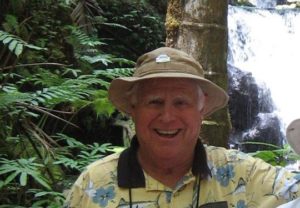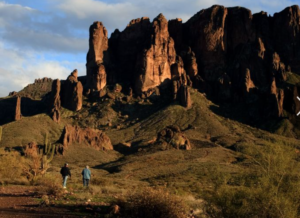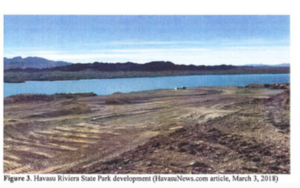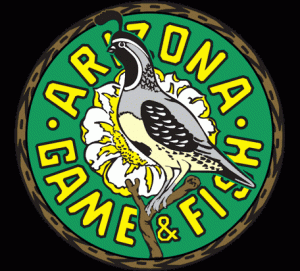Source: Editorial by Linda Valdez; Arizona Republic – November 23, 2018
Arizona’s State Parks got tangled in a big mess on Gov. Doug Ducey’s watch. But he has the tools to fix this.
- One is the bully pulpit.
- The other is the State Parks Board, a once-powerful body that has been reduced to lapdog status.
“When I was director, the board had authority over everything,” said Ken Travous, who served as parks director from 1986 to 2009. “I served at the pleasure of the board.” That changed. The Parks Board’s authority to hire and fire the director ended in 2012 with GOP Gov. Jan Brewer’s state personnel reform, which was designed to simplify how state employees are hired and fired. In practice, it made it easier to fire state workers. The change in Parks Board authority was included in the bill, even though Parks Board members serve without pay.
How are those reforms working out?
So how’s that change working out?
Black and former Deputy Director Jim Keegan were fired by Gov. Ducey Nov. 16, after years of allegations of mismanagement that were reported by The Republic’s Craig Harris. A criminal investigation is ongoing by Arizona Attorney General Mark Brnovich into allegations that laws protecting Native American and other archaeological sites were ignored under Black’s leadership to facilitate development at State Parks.
A strong Parks Board could’ve stopped Black
Black’s behavior has been the subject of state personnel investigations. Allegations of misbehavior by Black included showing up drunk at public functions, violating procurement rules and berating workers.
“I cannot imagine a board in my time not reacting strongly to those charges against a director,” said Bill Roe, who served on the board from 1986 to 1998, when directors answered to the board. But today’s Parks Board had no power over Black, and Ducey stood by her until she became too great of a political liability.
A strong Parks Board could have acted more decisively. And a strong board is what was intended when the Arizona State Parks system was created in 1957. With seven members appointed by the governor, it has operated effectively under administrations of both parties. It earned a reputation as an engaged board that provided oversight, reviewed budgets, scrutinized policy changes and assured that the public had a voice in the running of State Parks.
The board only met 4 times this year
But the board, which met nearly monthly before the 2012 personnel reform eviscerated it, has sharply curtailed the number of meetings in recent years. It held two meetings in 2016, four in 2017 and four so far this year. “It used to have a much more prominent role in administering the parks,” says the Sierra Club’s Sandy Bahr, who has been active in Arizona resource and environmental issues for decades. The Parks Board was a “forum for listening to the public,” a place for people to raise concerns about Parks’ management and get answers. “Now the public finds things out after the fact,” Bahr said.
In 2015, the board itself ceded more power when it gave the Parks director sole authority to hire and fire employees. Brnovich, who then served on the board, was “the lone dissenting voice” in that vote, says Ryan Anderson, spokesman for the AG’s office. Brnovich resigned from the board later that year.
They gave the director even more power
Former Parks Deputy Director Jay Ream recalls: “Brnovich warned the Parks Board not to authorize the director to hire and fire. They gave it to her and a week later I was gone … I was fired by Sue Black.” He had been been deputy director for nearly two decades.
Was is fair? Was it justified? A powerful Parks Board with its former authority would have demanded good answers. Firing a longtime employee would not have been solely up to a director. Keegan, who subsequently held Ream’s old position at Parks, was fired by Ducey along with Black amid allegations that the department expedited development by ignoring archaeological protection. The Parks Board might have prevented these problems. It would have assured public oversight before the fact – not after. Recent statutory and other changes have taken management of Arizona’s State Parks from the “community perspective to an authoritarian model,” says Travous. It hasn’t worked.
Here’s how Ducey can fix this
Ducey is in the best position to fix it.
Black’s tenure shows why change is needed, and Ducey can make the case better than anyone. After all, the problems that resulted after Brewer’s personnel reform weakened the Parks Board were not Ducey’s doing. But he saw the consequences and can provide the leadership now.
- The governor should begin by involving the Parks Board in hiring a new Parks director.
- He should encourage the board to have regular meetings.
- He should drop the idea of eliminating the board, which he supported previously, and let the board know he expects members to be engaged.
- Ducey should build on lawmakers’ understanding of the importance of a public body in land management. After all, the same law that removed the Parks Board’s authority to hire the director specifically retained that power for the Arizona Game and Fish Commission, which sets policy for the Game and Fish Department, and has long had strong support at the Legislature.
- Ducey should work to restore the State Parks’ share of Lottery money from the Heritage Fund, which was created by voters in 1990 to provide $10 million annually each to Parks and Game and Fish. The Parks’ money was taken during the recession. Game and Fish kept its allotment.
- Ducey can rally public support for stewardship of the state treasures and use it as leverage to move changes through the Legislature.
This is about your legacy, governor
If he does this, Ducey’s legacy as governor will include restoring a Parks’ oversight system that served the state well for decades and assured precious state resources – natural, prehistoric and historic – were wisely managed in full public view with public accountability.
The alternative?
Ducey can refuse to change course and let the next governor earn hero’s status by restoring what will be lost on his watch.
Reach Valdez at linda.valdez@arizonarepublic.com.






You must be logged in to post a comment.